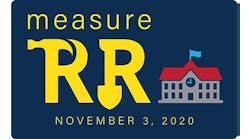REMOVING BARRIERS
More than half the compliance reviews initiated in fiscal 2004 by the U.S. Department of Education's Office of Civil Rights (OCR) involved higher-education accessibility issues, the office says.
In its annual report to Congress, the OCR says 28 of the 53 reviews are part of a nationwide enforcement initiative to eliminate access barriers for postsecondary students with disabilities.
The compliance reviews involve public and private post-secondary institutions and issues such as accessibility to residence halls, classrooms, academic buildings and parking.
The report also notes that the office conducted 2,084 “monitoring activities” in fiscal 2004, many of which led to better accessibility for students with disabilities. In one case, a district refused to allow a student with a disability to transfer to another school but allowed school transfers for students without disabilities. After the OCR stepped in, the district revised its transfer policy.
In another case, a district was excluding students with diabetes from field trips, and its staff was insufficiently trained to monitor and administer medications as needed during the school day and in extracurricular activities. The district subsequently altered its policies to allow those students on field trips and to train its staff to serve the needs of students with diabetes.
RICHMOND UPGRADES
Most of the school facilities in the Richmond (Va.) school district will receive upgrades to improve accessibility as part of a lawsuit settlement. The school board approved an agreement to bring its facilities into compliance with the Americans with Disabilities Act (ADA).
“Virtually every public school in Richmond has architectural defects that prevent persons with disabilities from full access to the school facilities,” argued David Hopper, attorney for the plaintiffs, in court documents. Those defects, Hopper says, have been acknowledged by school officials since at least 1992, but a “pattern of inattention and neglect … largely persisted until the fall of 2004.”
A school district study in 2005 showed that only four of the district's 60 school facilities were close to full compliance with the ADA. The settlement agreement calls for the district to adopt a five-year plan to carry out the upgrades called for in the study and other improvements.
Among the improvements: installation of elevators, wheelchair ramps, curb cuts, handrails, new entrance doors and alarm systems; bathroom renovations; playground upgrades; and signage.
The settlement did not specify the cost of the upgrades. Last year, the school district proposed a $17.1 million program to address its accessibility problems, but the city of Richmond rejected the plan. The city also is a defendant in the suit and has not agreed to the settlement.
FINISHING SCHOOL
The percentage of youth with disabilities who complete high school increased significantly from 1987 to 2003, a federal study shows.
According to the U.S. Department of Education's “National Longitudinal Transition Study-2,” 72 percent finished high school in 2003, compared with 55 percent in 1987.
The study also found that those with sensory or orthopedic impairments finish school at much higher rates than youth with multiple disabilities or emotional disturbances.
“Hispanic youth with disabilities and those from the lowest-income households also lag behind others in their high school completion rates,” the report states.
Source: U.S. Department of Education, “National Longitudinal Transition Study-2”

